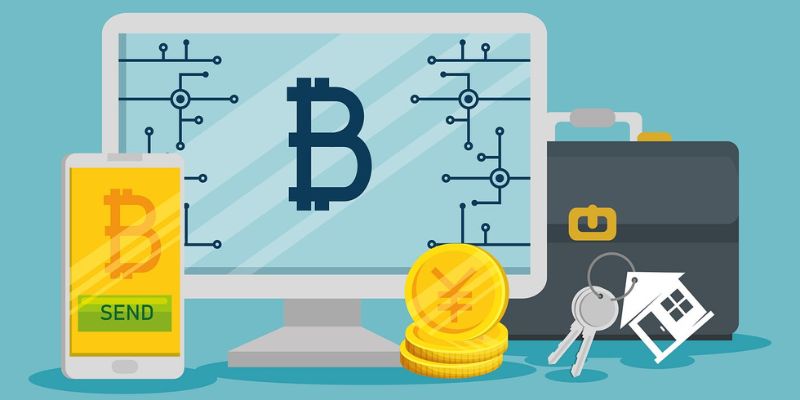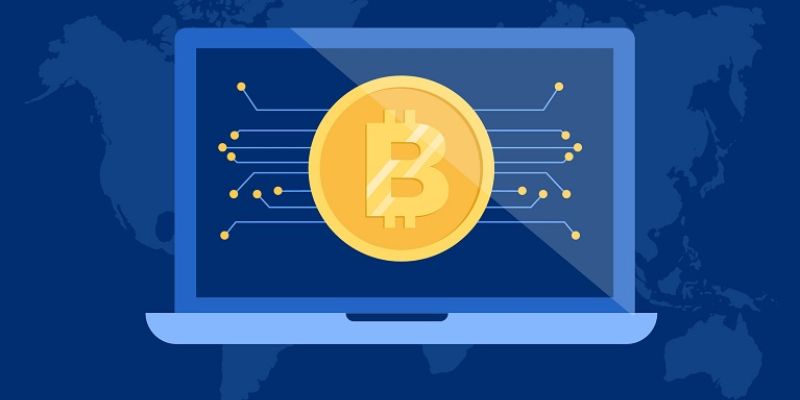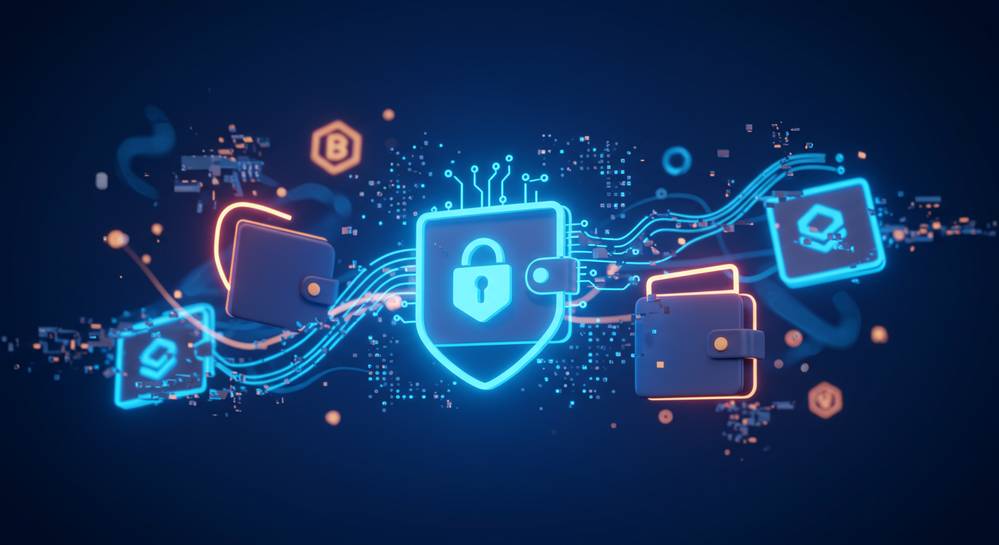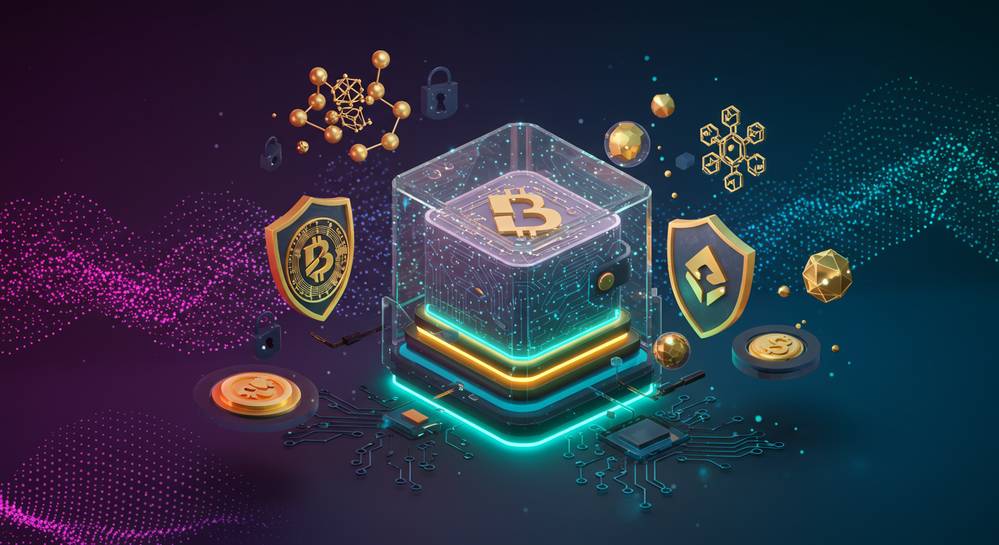How to setup a crypto wallet isn’t just about jumping on the blockchain bandwagon; it’s your path to smart, secure money management. Imagine having a pocket-sized bank vault, and you’re the only one with the key—that’s what a crypto wallet can offer. It’s time to turn the digital currency jargon into simple steps you can follow. Whether you’re figuring out wallets for the first time or aiming for an iron-clad digital safe, I’ll walk you through each type, set you up with the tools you need, and ensure your digital dollars are defended. Ready to take control of your cryptocurrency? Let’s dive in.
Understanding Cryptocurrency Wallet Types
Exploring the Different Forms of Digital Currency Storage
When you jump into the world of crypto, you hear a lot about wallets. But what types? You’ve got hot wallets, which are online, and cold wallets, which are offline. Hot wallets run on devices connected to the internet, like mobile phones or desktops. They’re handier, but they face more risk from hackers. Cold wallets, however, are pieces of hardware or even paper. They store your coins offline, away from online threats.
Deciding Between Hot Wallet vs Cold Wallet Solutions
Now, you might be wondering, which one do I pick? Hot wallets, like the ones on your phone or computer, are good for daily use. They make sending and receiving coins easy. But they’re not the best for keeping large amounts at once because they’re connected to the net. That’s where cold wallets, like hardware or paper ones, come in. They keep your crypto safe when you’re not using it, like a bank vault.
So let’s get down to the nitty-gritty. Imagine you’ve got a wallet in your pocket right now. In crypto, a hot wallet works in the same way. You have your spending money in it. It’s convenient but could be risky if lost or stolen, right? Cold storage, like your savings account, is for the money you don’t need today but want to keep safe for tomorrow. Got it?
Whether it’s a handy mobile wallet setup for grabbing a coffee with bitcoins or a robust desktop wallet at home for trading, hot wallets have you covered. But remember, they are more exposed to the dangers of the internet. Think of malware, phishing, all that bad stuff. On the other hand, hardware wallet configuration can be a little more complex, with pieces of tech to store coins. But, they give you peace of mind. And paper wallet instructions? They’re pretty much like folding a note with your crypto details and tucking it away.
Each wallet has its own steps. For mobile, it’s download, install, and secure with a pin or biometric lock. For desktop, you download it to your PC, install, and protect it with a strong password. And web wallets? Simply sign up, choose a strong password, and you’re set.
But here’s the kicker: with hot wallets, always watch out for who’s providing the wallet. Are they trusted? Have other folks used them without a hitch? These things count. Cold wallets don’t worry about internet risks, but you’ve got to keep them safe physically. Don’t let them get lost or damaged, or it’s bye-bye crypto.
To wrap things up, picking a wallet is like choosing a home for your digital money. You want it snug but also safe. Would you leave your door open when going out? No way! So think the same way about your crypto wallet. Whether it’s hot or cold, a little extra thought goes a long way in keeping your digital cash safe and sound.

Setting Up Your Cryptocurrency Wallet
Steps for Mobile and Desktop Wallet Installation
So, you want a safe home for your digital dough? Let’s start with mobile and desktop wallets, pals. Both are softwares that keep your coins snug and let you make moves on the blockchain. Go ahead, pick a wallet that fits your crypto kind: Bitcoin, Ethereum, or those other altcoins.
For mobile wallets, your phone is key. Dive into your app store and hunt for a wallet. Look for top-rated ones with the features you need. Download, and boom, you’re almost there. Now, create that new wallet. Write down your seed phrase, okay? It’s like a rescue rope for your funds.
Desktop wallet setup? Piece of cake! Navigate to a wallet’s website on your computer. Click that download link, and let it settle in. Once you install, open it up. You’ll get prompted to craft a new wallet. Do that and save your seed phrase. Don’t share it, keep it secret! This simple step is crucial for your coin safety.
Instructions for Hardware Wallet Configuration and Paper Wallet Creation
Looking for the Fort Knox of crypto storage? Enter hardware wallets. These are physical, like a USB stick, but for your crypto. To start, grab a wallet from a reputable provider. Connect it to your computer. Follow the provided steps to set it up. Remember, your seed phrase is golden. Lock it down!
Pen and paper more your style? Paper wallets are super simple. Go to a paper wallet generator site. Disconnect from the net to go stealth. Hit “generate,” and bam! You’ve got a wallet. Print that beauty and guard it with your life. A paper wallet is no-tech cold storage. It’s offline, so hackers can’t touch it.
Both of these methods keep your stash safe when not in use. Transfer funds to your new safe spot. Verify your coins made the trip. Now, breathe easy, friend. Your digital currency storage is set and solid.
Up next? Learning how to back up your wallet and keep it in sync. Stay tuned for smart moves to protect your digital treasure.

Ensuring the Security of Your Crypto Wallet
Harnessing proper seed phrase and private key management is vital. Your seed phrase is a lifeline for your crypto wallet. Consider it a master key for all your digital currency storage. Guard it well. Generate a solid seed phrase during your wallet setup. This aids in recovery in case of a faulty device or forgotten password.
Mastering Seed Phrase and Private Key Management
Your seed phrase and private key represent the heart of your wallet safety. Keep them secure. If lost, your cryptocurrency wallet becomes unreachable. Treat these keys as your most prized jewels. Do not share. Write down your seed phrase and store it in a secure place. It is your reliable backup option. Going digital? Encrypt it, then store it inside a secure digital vault. For your private key, use the wallet software to encrypt it with a complex password. Always ensure your crypto wallet password protection is robust.
Understanding how to manage and safeguard these keys is vital. It could mean the difference between retaining your assets or losing them to a cyber thief. Become a master at it. It will pay in the long run.
Regular Backup and Synchronization of Your Wallet
Embrace the habit of backing up your cryptocurrency wallet. This safeguards your assets. Run a wallet backup after every transaction. Connect to your wallet provider’s server regularly for wallet synchronization. This process ensures your transaction records are up to date on the blockchain.
Regular backups offer an extra line of defense. They recover your wallet in the event of hardware failure or loss. Where to store your backup? Cold storage solutions for crypto provide the best security. A cold wallet, such as a hardware or paper wallet, offers offline storage, safe from online threats. Opting for a hot wallet like mobile app wallet security? Be sure to enable all available security features.
Web wallet, Desktop wallet, Mobile wallet, or Hardware wallet? Each has its merits. But for the ultimate in security and control, many favor the hardware wallet. It offers high-security storage for multiple currencies.
Remember, a secure wallet is your best ally in the crypto world. Take your time to understand and implement sound security practices. If need be, get help from a reputable wallet provider or consult their customer support options. Seek out a crypto wallet guide, learn about wallet transaction fees, and understand wallet compatibility with exchanges. It’s all part of managing your digital coins securely and effectively.

Advanced Wallet Features and Maintenance
Utilizing Multisignature and Decentralized Wallet Options
Secure your coins like a boss with multisig wallets. It’s like having multiple keys to a safe. For a transaction to go out, you need permission from a set group of people. This way, if someone gets their sneaky hands on one key, they can’t take your money. This setup is a must for teams handling large sums of digital currency or families wanting to manage their crypto together.
Decentralized wallets give power back to you. No middleman to hold your funds or make you wait. Your assets, your rules. Use decentralized options for full control plus the thrill of true crypto spirit. It’s like being your own bank!
Keeping Up With Wallet Software Updates and Customer Support Services
Stay sharp – update your wallet software. Like a shield, the latest version protects your digital gold from attackers. Ignoring updates is like leaving your door open for thieves. Hit that update button as soon as it pops!
Got wallet woes? Reach customer support. Don’t fret alone; these people are here to help. They’ll guide you through a pinch with recovery phrases or a botched transaction. Good support means you’re never lost in the crypto jungle.
By staying on top of these tips, you’ll have a stout fortress for your virtual coins. Keep those keys safe, update often, and remember, help is just a chat away!
In this post, we’ve explored how to pick the right crypto wallet for your needs. We delved into the kinds of wallets out there and how to decide between a hot wallet, which is always online, and a cold wallet, that stays offline. We’ve walked through setting them up, whether it’s on your phone, computer, or using a hardware or paper wallet.
We also covered how to keep your digital funds secure. Remember, managing your seed phrases and private keys is critical. Regular backups of your wallet can save a lot of headaches. Finally, we touched on advanced features like multisig wallets and why keeping your wallet software updated is vital.
My final thought? Take control of your crypto journey with confidence. A secure, well-managed wallet is your first step. Cheers to making smart choices and staying safe in the crypto world!
Q&A :
What steps do I need to take to create a crypto wallet?
Setting up a crypto wallet usually involves downloading a wallet application or registering for a web-based service, creating a secure password, writing down a recovery phrase, and understanding basic security practices for digital assets. It’s important to research the types of wallets available (such as hardware, mobile, or desktop) and choose one that fits your needs for security, convenience, and coin support.
Can I set up a cryptocurrency wallet without advanced technical knowledge?
Yes, setting up a cryptocurrency wallet does not require advanced technical knowledge. Wallet providers have strived to create user-friendly interfaces that guide users through the setup process step-by-step. It’s crucial, however, to follow security best practices like creating a strong password and safely storing the recovery phrase.
Are there any costs associated with setting up a cryptocurrency wallet?
Most cryptocurrency wallets are free to set up, especially if you’re choosing a software wallet. However, if you opt for a hardware wallet, which is considered more secure, there will be a cost to purchase the physical device. Be wary of services that charge for downloading digital wallet applications, as these might not be legitimate.
What is a recovery phrase, and why is it important in setting up a crypto wallet?
A recovery phrase, also known as a seed phrase, is a series of words generated by your crypto wallet during the setup process. This phrase acts as a backup key to restore your wallet and funds if your device is lost, stolen, or corrupted. It’s critical to store your recovery phrase in a secure location and never share it with anyone.
How do I ensure my crypto wallet is secure after setup?
To enhance the security of your crypto wallet, you should create a strong, unique password, enable two-factor authentication (2FA) if available, regularly update your wallet software, and never share your private keys or recovery phrase with others. For added security, consider using a hardware wallet or multisignature wallet arrangement.



